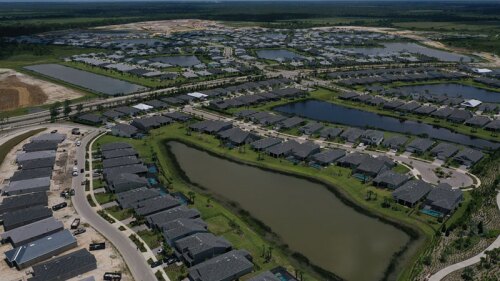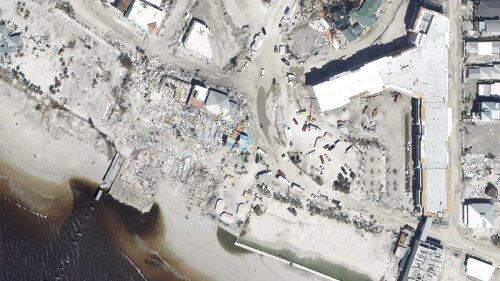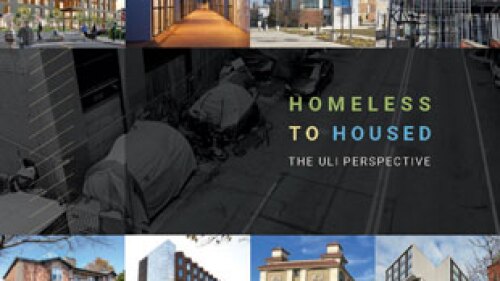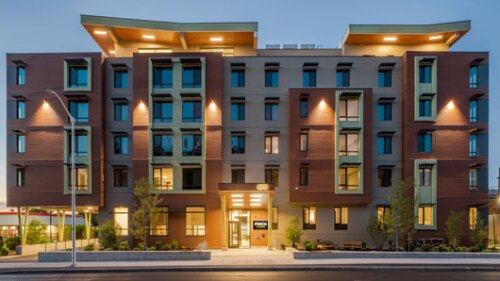As COVID-19 continues to spread around the globe,people are struggling to establish best practices for themselves and theircommunities. Amid a cacophony of hearsay and contradictory directives, there aretimely and verified real data from South Korea (a country that, as of earlyApril, seemingly had passed its peak of infections) that can provide guidanceto policymakers and building owners as well as the general public.
This article compares two buildings at the center of viraloutbreaks in Korea and provides information on where COVID-19 clusters have occurred.By presenting this research, based on my review of recent data from the KoreaCenters for Disease Control and Prevention (KCDC) and local news reports, Ihope to contribute some hard facts to the discussion concerning buildingsystems and COVID-19.
The first building is Shincheonji Church of Jesus inDaegu, South Korea, which was determined to be the epicenter of the COVID-19 epidemicin the country. Built in 1991, the church is a nine-story concrete structurewith one basement floor. Each above-ground floor covers an area of 934 to 985square meters (10,000 to 10,600 sq ft) and the basement covers 1,168 square meters(12,572 sq ft). According to a press release issued by the first confirmedinfection case from this group, identified on February 18, was a 61-year-oldwoman who attended church services on the mornings ofFebruary 9 and 16, temporarily leaving the hospital where she had been stayingsince February 7 for cold-related symptoms.
The near-zero temperature (32 °F) at the time of the services, coupled with conditions inside the church, likely created an environment conducive to contagion. Based on news reports, the church was crowded with hundreds of people sitting close to each other during services. Moreover, based on publicly available photos, the number of air terminals appears to be inadequate relative to the density of the people and the size of the space; this would provide an inadequate amount of fresh air, says Wang Yan-Ping, a building management system expert currently finishing his PhD in civil engineering at Stanford University. And research shows that low humidity makes the human body more susceptible to getting infected by viruses.
It is important to note that while these buildingconditions likely permitted the virus to spread, social interaction amongaffected church members and the church’s verbally expressive form of worship alsowere contributing factors. In addition, it was reported that the 61-year-oldwoman did not wear a mask during services because the wearing of masks was notallowed.
As a direct result of the outbreak at this ShincheonjiChurch, 4,400 cases of coronavirus have been corfirmed as of March 28. As of March28, Daegu—the country’s third-largest city with a population of about 2.5million—had 6,610 confirmed cases, representing 69 percent of the 9,583confirmed cases in the country. There were 5,089 cases of coronavirus among Shincheonjimembers (from this and other church locations) who tested positive,representing 53 percent of the country’s total.
The second building I want to discuss is a 19-story structurelocated near two major subway stations in Seoul’s Guro District. The building’sbottom six floors are used for a wedding hall and café, the seventh to 11th floors are used for call centersand offices, and the 13th to 19th floors are used for small office/home office(SOHO) units. The building also has six basement floors. The outbreak in thebuilding was primarily concentrated in an insurance call center that took upthe entire 11th floor, with roughly 1,103 square meters (12,000 sq ft) of floorarea. The call center had about 200 employees, a combination of call operators,document processors, and managers.
The first confirmed case occurred on February 25, andby March 8 about 60 additional workers in the call center had confirmed cases. Concernedabout a potential building-wide contagion, the government authority shut downthe building on March 9 and over several days tested all 1,143 workers,residents, and visitors. When news of the outbreak was first reported, therewas a great amount of concern that other people—especially workers who sharedthe elevator to odd-numbered floors and subway passengers at the two nearbystations—might be infected.
After a two-week investigation, on March 25, the KCDC announced the results of its investigation. The KCDC’s report said that as of March 25, the building had 97 confirmed cases of COVID-19, consisting of 94 cases from the call center on the 11th floor, two cases on the 10th floor, and one case on the ninth floor. In addition, 61 contacts of the 97 infected people were confirmed, including 34 family members, five acquaintances, and 22 members of a church.
According to the March 25 investigation report from the KCDC, the data showed a high infection rate of 43.5 percent for the workers in the call center, while the infection rate was 7.5 percent for the offices on the 10th floor and 0.5 percent for another call center on the ninth floor. The KCDC’s report states that the virus spread by repeated exposure to droplets.
Dr. Jeong Eun-kyung, head of the KCDC, said on March25, “Based on the fact that there were nearly no other infected people on otherfloors, we have confirmed that the probability of infection through sharing an elevatoror an office lobby for a brief period as part of daily life is low.” She alsoidentified the high density and inadequate ventilation in the call center as likelycontributing factors for the contagion. “In an enclosed, crowded, andinadequately ventilated workplace [i.e., the 11th-floor callcenter], there was a very high infection rate.”
Within the call center, proximity may have had aneffect—there was a significantly higher rate of infection among call operatorsoccupying one half of the floor versus managers and document processorsoccupying the other half. It was reported that the operators did not wear masks,given the nature of their work—speaking into headsets.
Based on information provided by the KCDC on March 28,here is a breakdown of the types of buildings identified with confirmed cases:
Site People
Apartments 3
Kindergartens 5
PC gaming centers 10
Offices 41
Pilgrimage trip 49
Townships 55
Nursing homes 68
Gyms 111
Call centers 116
Churches 177
Hospitals 394
Shincheonji Church 5,089
(Note: This table doesnot include contacts of confirmed cases, imported cases, and cases still underinvestigation. The figure for Shincheonji Church represents multiple churchbuildings, though the Daegu church represents the majority.)
By no means is theCOVID-19 crisis in Korea over. The country is still experiencing about 100 newconfirmed cases each day, many from Koreans returning from overseas looking fora safe haven. Also, despite the government’s plea, some churches continue tohold services, and most recent cluster outbreaks have been in churches. Newsreports of such outbreaks often cite crowding and expressive forms of worshipas potential causes of transmission. So far, there have not been any knownoutbreaks in Korean movie theaters or subways. (When infections took place inmid-February to early March, cinemas and subways were still open, but there wasa decrease in the number of users.)
It is important to notethat since COVID-19 was first detected in Korea on January 18, the country has beenon high alert, and the government has strongly encouraged that all people, evenyoung and healthy people, practice proper personal hygiene—washinghands, disinfecting surfaces, not touching their face,and so on—and wearmasks when outside their homes.
My review of the datafrom the KCDC and news reports clearly supports the need for social distancing.Many of the reported cluster outbreaks in South Korea involved people engagedin social activities, especially talking close to each other for prolonged periodsof time. Affected people have often been in crowded indoor venues withinadequate ventilation and possibly low humidity, as it is often the case inthe middle of Korea’s cold winter.
Obviously, this articledoes not constitute a sufficient study of all available data provided by the KCDC.Yet it is clear that the rich and granular data gathered over the past threemonths and made publicly available by the KCDC can be valuable resources (www.cdc.go.kr/).The data can help us understand how COVID-19 has spread in building environmentsand can inform government leaders, building maintenance experts, and buildingowners about how they can respond.
Note: The author wishesto thank Yan-Ping Wang, a PhD student in civil and environmental engineering atStanford University and CEO of iDRC, a Shanghai-based building managementsystem consultancy, for his help in reviewing the article and conducting theanalysis of the conditions inside the Shincheonji Church.




